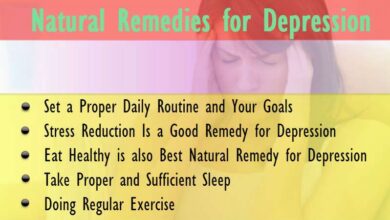
Park prescriptions can lower stress, offering a refreshing alternative to traditional medical treatments. This approach harnesses the power of nature to promote well-being, reducing stress through engaging outdoor activities. Imagine a program tailored to individual needs, guiding individuals through nature-based therapies, and fostering a stronger connection with the environment.
The program encompasses a range of activities, from mindful walks to gardening sessions, all designed to alleviate stress and improve mental health. It delves into the science behind nature’s restorative powers, highlighting the physiological and psychological benefits of spending time in green spaces. Furthermore, it examines the practical aspects of implementing such programs, from training facilitators to engaging communities.
Ultimately, this comprehensive exploration aims to demonstrate the tangible benefits of park prescriptions in promoting overall well-being.
Defining Park Prescriptions
Park prescriptions, a burgeoning approach to healthcare, leverage the therapeutic power of nature. They recognize the significant role green spaces play in improving physical and mental well-being, moving beyond traditional treatment models to incorporate outdoor activities as a form of preventative and restorative care. This approach aims to improve overall health and quality of life by integrating the outdoors into patient care plans.Park prescriptions are a structured program that guides individuals toward engaging in specific park activities to address their health needs.
They are not a replacement for traditional medical care, but rather a complementary strategy for managing chronic conditions and promoting wellness.
Defining Park Prescriptions
A park prescription is a tailored plan that encourages individuals to use parks and green spaces for their well-being. It combines a medical professional’s recommendation with a guided program of outdoor activities in parks. This approach aims to improve physical and mental health, reduce stress, and enhance overall quality of life. It’s a patient-centered strategy, and the activities are chosen based on the individual’s specific needs and preferences.
Key Components of a Park Prescription Program
Park prescription programs typically involve several key elements:
- A physician’s recommendation or referral. The doctor assesses the patient’s health needs and prescribes specific park-based activities tailored to their condition.
- A park or green space partner. This could be a local park district, a community garden, or other designated area. The park partner provides access to the facilities and potential support staff.
- A structured program of activities. This could include walking trails, gardening, meditation, or other activities. The program will be designed to be achievable, sustainable, and aligned with the patient’s goals.
- Ongoing support and monitoring. Regular check-ins and feedback sessions allow for adjustments to the program as needed, encouraging continued engagement.
Examples of Park Prescription Activities
Park prescription activities are diverse, encompassing various ways to connect with nature.
- Walking/Hiking: A simple walk in a park can reduce stress and improve cardiovascular health.
- Gardening: Engaging in gardening activities can provide physical activity, reduce stress, and foster a sense of accomplishment.
- Nature-based meditation: Focusing on the sights, sounds, and smells of nature can be deeply relaxing and reduce anxiety.
- Picnics and social gatherings: Enjoying a meal outdoors with others can foster social connections and improve mental well-being.
- Yoga or Tai Chi in a park setting: Combining physical activity with mindfulness can provide a holistic approach to wellness.
Park Prescriptions vs. Traditional Medical Prescriptions
Park prescriptions differ significantly from traditional medical prescriptions. While both aim to improve health, they use vastly different approaches.
| Characteristic | Park Prescription | Traditional Prescription |
|---|---|---|
| Purpose | Promote wellness, reduce stress, and improve quality of life through outdoor activities. | Treat specific medical conditions with medication or procedures. |
| Method | Prescribe outdoor activities, guidance, and support. | Prescribe medications, therapies, or surgeries. |
| Expected Outcome | Improved physical and mental well-being, reduced stress, and increased quality of life. | Symptom relief, disease management, or improved physiological function. |
Stress Reduction Mechanisms in Parks
Parks are more than just green spaces; they are powerful tools for stress reduction. Spending time in nature has demonstrably positive effects on our mental and physical well-being, and parks provide readily accessible environments to experience these benefits. This section explores the mechanisms through which parks contribute to stress relief, examining the psychological and physiological impacts of nature immersion.The human mind and body are deeply connected to the natural world.
Studies show that exposure to natural environments can significantly lower stress hormones like cortisol and increase feelings of calm and well-being. This natural connection is deeply rooted in our evolutionary history, and parks provide a modern-day sanctuary for reconnecting with these fundamental aspects of our biology.
Psychological Benefits of Nature Exposure
Exposure to nature fosters a sense of peace and tranquility. Immersion in natural environments promotes a sense of awe and wonder, shifting attention away from daily stressors and anxieties. This shift in focus allows for mental restoration and a renewed sense of perspective. Research has consistently linked nature exposure to improved mood and reduced symptoms of depression and anxiety.
This mental restoration is crucial for managing stress effectively.
Park prescriptions are a fantastic way to lower stress levels, and a healthy lifestyle choice overall. However, while focusing on well-being, it’s crucial to understand that high HDL levels, sometimes touted as beneficial, can actually present potential health concerns. Exploring the dangers of high HDL levels is important for a holistic approach to health, as discussed in more detail in this article about high hdl health dangers.
Ultimately, a balanced approach, including park visits, can contribute significantly to stress reduction and overall well-being.
Physiological Benefits of Nature Exposure
Beyond the psychological benefits, spending time in parks can directly impact our physiological responses to stress. Exposure to nature has been shown to lower heart rate and blood pressure, two key physiological markers associated with stress. This calming effect on the body’s stress response is likely facilitated by the release of stress-reducing hormones, such as oxytocin, during nature exposure.
This effect is further enhanced by increased levels of physical activity, such as walking or playing in the park.
Specific Mechanisms of Stress Reduction in Parks
Parks offer a multitude of mechanisms for stress reduction. The presence of greenery, water features, and open spaces all contribute to a calming atmosphere. These features stimulate a variety of senses, encouraging relaxation and reducing the body’s stress response. Furthermore, the visual appeal and the auditory qualities of parks provide a break from the often visually and auditorily stimulating urban environments.
The feeling of being disconnected from the daily pressures of life is a powerful component of stress reduction.
Park Features and Their Stress-Reducing Effects
Various park features contribute to stress reduction in unique ways. The calming influence of natural elements like trees, water, and open spaces creates a sense of peace and tranquility. These elements interact with our senses, contributing to a shift in our physiological and psychological responses to stress.
| Park Feature | Associated Stress-Reducing Effect |
|---|---|
| Trees and Greenery | Reduces blood pressure, lowers heart rate, and promotes a sense of calmness. Studies show increased feelings of peace and restoration in environments with abundant greenery. |
| Water Features | The sound of flowing water has a soothing effect, reducing stress and promoting relaxation. The visual aspect of water can also be visually calming. |
| Open Spaces and Views | Open spaces and expansive views provide a sense of freedom and perspective, allowing for mental distancing from daily stressors. The vastness of nature can foster a sense of awe and wonder, reducing anxiety. |
| Natural Light | Natural light exposure regulates the body’s natural circadian rhythm, impacting mood and stress levels. It is a crucial factor for improving sleep quality and reducing feelings of stress. |
Implementing Park Prescriptions
Putting park prescriptions into action requires careful planning and execution. This involves more than just designating a park space; it’s about creating a structured program that empowers individuals to experience the therapeutic benefits of nature. Successful implementation hinges on clear guidelines, well-trained facilitators, and adequate resources to ensure the program’s long-term sustainability and effectiveness.
Steps in Implementing a Park Prescription Program
Establishing a park prescription program involves a series of steps, from initial planning to ongoing evaluation. A well-defined structure ensures the program aligns with the community’s needs and resources.
- Needs Assessment and Program Design: A thorough assessment of the community’s health needs, park resources, and available support systems is crucial. This informs the design of a tailored program that addresses specific needs, such as accessibility for individuals with disabilities, and considerations for different age groups. This also includes identifying potential partners and collaborators, like local healthcare providers or community organizations.
- Park Site Selection and Development: Appropriate park spaces should be selected based on accessibility, safety, and the specific needs of the program participants. This may involve modifying existing trails or developing new ones, providing accessible amenities like benches and drinking fountains, or organizing the space for different activities.
- Facilitator Training and Qualifications: Thorough training for facilitators is essential to ensure they can effectively guide participants, provide support, and address potential health concerns. This training should encompass the program’s philosophy, health and safety procedures, communication skills, and knowledge of relevant park amenities.
- Recruitment and Enrollment: Clear communication about the program and its benefits is essential for attracting participants. Marketing strategies should emphasize the program’s accessibility, affordability, and the potential for improved well-being.
- Program Evaluation and Improvement: Regular evaluation of the program is necessary to assess its effectiveness and identify areas for improvement. Data collection and feedback from participants are crucial for making adjustments and ensuring the program’s long-term success.
Facilitator Qualifications and Training
Facilitators play a critical role in the success of park prescription programs. They are the link between the park environment and the participants’ well-being. Therefore, their qualifications and training are paramount.
- Education and Experience: Facilitators ideally possess a background in health and wellness, such as a certified health coach, social worker, or similar field. Experience working with diverse populations and individuals with varying health conditions is highly beneficial.
- Training in Park-Based Activities: Training in leading various park activities, such as nature walks, yoga sessions, meditation, or guided relaxation exercises, is essential. This training should also encompass safety procedures in a natural environment and basic first aid.
- Communication and Interpersonal Skills: Strong communication and interpersonal skills are crucial for building rapport with participants, addressing their concerns, and fostering a supportive environment.
- Knowledge of Health and Safety Procedures: Understanding and adherence to health and safety guidelines within a park setting are critical for minimizing risks and maximizing the program’s effectiveness.
Resources for Park Prescription Programs
Adequate resources are vital for the smooth operation and sustainability of park prescription programs.
| Resource Category | Specific Resources |
|---|---|
| Park Staff | Park rangers, maintenance staff, and administrative personnel can play a critical role in program support. |
| Equipment | This includes necessary amenities like benches, water stations, first aid kits, and appropriate signage for trail navigation. |
| Funding | Secure funding sources are essential to cover program costs, including facilitator training, marketing materials, and equipment maintenance. |
| Partnerships | Collaborations with local healthcare providers, community organizations, and other relevant stakeholders can enhance the program’s reach and impact. |
Step-by-Step Procedure for a Park Prescription Program
A structured approach is crucial for a successful program.
Spending time in nature is a fantastic stress reliever, and park prescriptions are a great way to incorporate this into your daily routine. Finding support and advice is key, and checking out some of the best step mom blogs, like those featured on the best step mom blogs badge , can provide valuable insights and inspiration for navigating those tricky family dynamics.
Ultimately, though, even a short walk in the park can significantly lower stress levels, and is worth considering as part of a healthy lifestyle.
- Needs Assessment and Program Design: This involves identifying the community’s health needs, park resources, and potential partners.
- Park Site Selection and Development: Choose appropriate park areas, considering accessibility, safety, and amenities.
- Facilitator Recruitment and Training: Recruit qualified facilitators and provide comprehensive training.
- Program Promotion and Enrollment: Reach out to the target population through marketing and recruitment strategies.
- Program Implementation: Monitor participant progress and provide necessary support and guidance.
- Evaluation and Improvement: Collect data and feedback to evaluate the program’s effectiveness and make improvements.
Examples of Park Prescription Programs
Park prescription programs can adapt to various settings, catering to specific community needs.
Park prescriptions are a fantastic way to de-stress, and honestly, they’re a great tool for coping with everyday anxieties. While it’s completely understandable to feel a little anxious about the current situation, remember to take a deep breath and check out some helpful resources like dont freak out about the coronavirus just yet. Ultimately, spending time in nature, connecting with the outdoors, and taking care of your mental well-being through park prescriptions is key to managing stress and feeling grounded.
- Urban Settings: Urban park prescription programs often focus on stress reduction and mental well-being, providing accessible spaces for relaxation and nature engagement in densely populated areas.
- Rural Settings: Rural park prescription programs can incorporate outdoor activities such as hiking, fishing, and nature walks, tapping into the unique landscapes and recreational opportunities of these areas.
Benefits and Outcomes of Park Prescriptions: Park Prescriptions Can Lower Stress
Park prescriptions, going beyond simply recommending time in nature for stress relief, offer a wide range of potential benefits for individuals’ well-being. These programs can significantly improve quality of life by fostering physical health, mental resilience, and social connections within a supportive community setting. This approach recognizes the multifaceted role parks play in human health and empowers individuals to actively engage with their surroundings for holistic improvement.
Expanding Benefits Beyond Stress Reduction
Park prescriptions are not solely about reducing stress; they have a broader impact on overall health and well-being. The therapeutic value of nature extends to physical, mental, and social domains, promoting a healthier lifestyle. These benefits contribute to a more fulfilling and enriching life experience.
Positive Impacts on Mental Well-being
Parks provide a sanctuary from the pressures of daily life, offering opportunities for reflection and relaxation. Studies consistently demonstrate the calming effect of natural environments on the mind, leading to reduced anxiety and improved mood. Time spent in parks can enhance feelings of peace and contentment, fostering emotional regulation and a sense of overall mental well-being. This, in turn, supports improved cognitive function and resilience in the face of challenges.
Improvements in Physical Health
Active engagement in park environments can contribute significantly to physical fitness. Walking trails, open spaces, and recreational facilities within parks encourage physical activity, leading to increased cardiovascular health, muscle strength, and weight management. Exposure to sunlight in parks can also contribute to vitamin D production, beneficial for overall health. The opportunity to engage in a variety of activities, such as playing sports or simply enjoying a stroll, enhances overall physical health and well-being.
Enhancing Social Connections
Parks are often vibrant hubs of social interaction. Park prescriptions can facilitate opportunities for community engagement and social interaction. Shared activities in parks, such as group walks, picnics, or organized events, can foster a sense of belonging and create new social connections. This social interaction can contribute to a greater sense of community and support, further enhancing overall well-being.
Improved Quality of Life
The combined effects of reduced stress, improved physical and mental health, and enhanced social connections result in a significant improvement in quality of life. Park prescriptions empower individuals to take control of their well-being by providing accessible and engaging resources. This active participation in nature fosters a more fulfilling and enriching experience, contributing to a greater sense of purpose and overall happiness.
Potential Challenges and Limitations
While park prescriptions hold significant promise, certain challenges and limitations need consideration. Access to parks, especially for individuals with mobility limitations, can be a barrier. The availability of trained professionals to guide and support participants is crucial. Furthermore, the effectiveness of park prescriptions can vary depending on individual needs and preferences, requiring individualized approaches. Weather conditions and park maintenance can also influence the usability and accessibility of park resources.
Table of Benefits of Park Prescriptions, Park prescriptions can lower stress
| Category | Benefits |
|---|---|
| Mental Well-being | Reduced stress, anxiety, and improved mood; enhanced emotional regulation; improved cognitive function; increased resilience |
| Physical Health | Increased physical activity; improved cardiovascular health; enhanced muscle strength; weight management; improved vitamin D production |
| Social Connections | Increased opportunities for community engagement; enhanced social interaction; fostered sense of belonging and support; creation of new connections |
| Quality of Life | Improved overall well-being; increased sense of purpose and fulfillment; a more enriching and fulfilling life experience |
Illustrative Examples of Park Prescription Activities
Park prescriptions aren’t just about handing out park passes; they’re personalized plans tailored to individual needs. Understanding the various activities and their specific benefits is crucial for effective implementation. This section dives into illustrative examples, exploring the rationale behind each activity, its expected outcomes, and how they contribute to stress reduction.
Park Walks and Nature Walks
Park walks, a cornerstone of park prescriptions, offer a range of benefits. Structured walks, often guided, provide a framework for physical activity and mindful engagement with nature. These walks can be tailored to individual fitness levels and preferences, ranging from leisurely strolls to brisk hikes.
- Rationale: Walking in nature has been linked to decreased stress hormones like cortisol and increased production of endorphins, which have mood-boosting effects. The calming presence of nature can be a powerful antidote to stress.
- Expected Outcomes: Reduced blood pressure, improved mood, and a sense of calm are typical outcomes. Regular walks can also lead to weight management and improved cardiovascular health.
- Stress Reduction Mechanisms: The physical activity stimulates the body’s natural stress-reducing mechanisms. Immersion in nature fosters a sense of peace and tranquility, disengaging from stressful thoughts.
Gardening and Horticultural Activities
Gardening provides a unique opportunity for stress reduction. The physical labor involved, combined with the rewarding experience of nurturing plants, creates a positive feedback loop.
- Rationale: Engaging with the earth, planting seeds, and witnessing growth can be incredibly therapeutic. The focus required for these tasks can help divert attention from stressors.
- Expected Outcomes: Improved focus and concentration, reduced feelings of anxiety, and a sense of accomplishment are often reported. Gardening can also promote a connection to the natural world.
- Stress Reduction Mechanisms: The physical exertion and focus on a specific task can distract from worries. The natural beauty and sensory experiences associated with gardening can soothe the mind.
Nature-Based Mindfulness Exercises
These activities combine the power of nature with mindfulness techniques.
- Rationale: Mindfulness exercises, like guided meditations in a park or simply observing the details of a natural scene, can foster a sense of presence and reduce rumination on stressful thoughts.
- Expected Outcomes: Increased awareness of the present moment, reduced anxiety, and improved emotional regulation. These practices can foster a greater sense of self-awareness.
- Stress Reduction Mechanisms: Mindfulness practices, when coupled with the soothing influence of nature, promote a detachment from stressful thoughts. Focusing on the present moment, rather than dwelling on the past or worrying about the future, is a key stress reduction strategy.
Table: Park Prescription Activities
| Activity | Goal | Stress Reduction Methods |
|---|---|---|
| Park Walks | Promote physical activity and nature connection | Physical exertion, nature immersion, mindfulness |
| Gardening | Foster a sense of accomplishment and connection to nature | Physical labor, focus on task, sensory experiences |
| Nature-Based Mindfulness | Cultivate presence and reduce rumination | Mindfulness exercises, sensory engagement, nature immersion |
Community Engagement in Park Prescriptions

Park prescriptions, a powerful tool for promoting well-being, thrive on community involvement. Engaging residents fosters a sense of ownership and responsibility for park spaces, ultimately enhancing the program’s effectiveness and sustainability. By creating a network of support and understanding, communities can create more accessible and beneficial green spaces for everyone.Community engagement isn’t just a nice-to-have; it’s fundamental to the success of park prescription programs.
Active participation from residents ensures the program aligns with local needs and preferences, resulting in a more impactful and lasting effect on the health and well-being of the community.
Importance of Community Involvement
Community involvement is crucial for several reasons. First, it empowers residents to take an active role in shaping their environment, fostering a sense of ownership and responsibility for park spaces. Second, it allows for the program to adapt to the specific needs and preferences of the community. Understanding local challenges and aspirations is vital for crafting effective interventions.
Third, it broadens the reach and impact of the program by leveraging the knowledge and resources within the community.
Strategies for Educating the Community
Effective communication is key to educating the community about park prescriptions. This includes clear and concise information about the program’s benefits, the process of accessing it, and the roles of different stakeholders. Public awareness campaigns can be implemented through various channels, such as workshops, community events, social media, and partnerships with local media outlets. Furthermore, partnerships with community leaders can help amplify the message and build trust within the community.
Providing accessible materials, including brochures and online resources, is essential for reaching diverse audiences.
Potential Community Partners
Collaboration with local businesses and community organizations can significantly enhance the program. Businesses can contribute resources, sponsorship, or volunteer support. Community organizations, like neighborhood associations or local schools, can act as valuable conduits for information dissemination and community outreach. Hospitals, health clinics, and mental health providers can play a significant role in connecting individuals with the program and providing support services.
These collaborations can leverage existing networks and expand the program’s reach, creating a comprehensive support system.
Role of Volunteers
Volunteers are essential for the smooth operation and success of park prescription programs. Their contributions can range from leading guided walks and park clean-up initiatives to providing companionship during outdoor activities. They can also assist with administrative tasks, community outreach, and program promotion. Training volunteers on park safety, first aid, and program guidelines is crucial to ensuring both the program’s success and the well-being of participants.
Volunteer recruitment strategies should focus on attracting diverse individuals with a passion for parks and community engagement.
Examples of Successful Community Engagement Strategies
One successful strategy involves creating a dedicated webpage with all the information on park prescriptions, including the benefits, program details, testimonials, and contact information. This digital platform serves as a central hub for community engagement. Another effective strategy is hosting free introductory workshops on the use of park spaces for stress reduction and mental health, inviting local health professionals to participate.
By showcasing the tangible benefits of park prescriptions, these strategies effectively engage the community.
Park Prescription Program Evaluation
Park prescription programs, designed to connect individuals with nature for stress reduction, require robust evaluation methods. Understanding the program’s impact is crucial for refining its effectiveness and securing continued funding and support. A well-structured evaluation plan provides evidence-based data to demonstrate the program’s value and inspire wider adoption.A comprehensive evaluation approach goes beyond simple satisfaction surveys. It delves into the program’s impact on participants’ well-being, including physiological markers, mental health indicators, and overall quality of life.
This multifaceted evaluation allows for a deeper understanding of the program’s success.
Methods for Evaluating Effectiveness
Evaluation of park prescription programs demands a multi-faceted approach that considers both quantitative and qualitative data. Quantitative methods, like pre- and post-intervention surveys measuring stress levels, blood pressure, and mood, provide concrete data on physiological and psychological changes. Qualitative data, including interviews and focus groups, offer valuable insights into participants’ experiences, perceived benefits, and challenges. These methods, combined, paint a richer picture of the program’s overall impact.
Key Metrics for Measuring Program Success
Several key metrics can be employed to assess the efficacy of park prescription programs. These metrics should align with the program’s specific objectives and target population. Examples include changes in stress hormones, improvements in self-reported mental well-being, increased physical activity, and the number of participants engaging in park-based activities. Tracking these metrics provides a clear picture of the program’s success.
Importance of Collecting and Analyzing Data
Data collection and analysis are paramount to the success of any park prescription program evaluation. Rigorous data collection procedures ensure the accuracy and reliability of the results. Statistical analysis helps identify patterns and trends in the data, enabling a deeper understanding of the program’s impact. Careful analysis allows for informed decisions regarding program improvements and future development.
Framework for Evaluating the Impact of Park Prescriptions
A robust framework for evaluating park prescription programs should encompass several stages. Initial baseline data collection establishes a benchmark for comparison. Subsequent data collection points during and after the program allows for tracking of progress and changes. Finally, analysis of collected data identifies trends and patterns, leading to program adjustments and enhancements. This iterative process ensures the program’s ongoing relevance and effectiveness.
Evaluation Metrics and Significance
| Evaluation Metric | Significance |
|---|---|
| Change in stress hormone levels (e.g., cortisol) | Provides a physiological measure of stress reduction. |
| Self-reported stress levels (e.g., via questionnaires) | Assesses subjective experience of stress and well-being. |
| Number of park visits and duration of park activities | Tracks engagement and utilization of park resources. |
| Changes in blood pressure and heart rate | Indicates physiological benefits related to stress reduction. |
| Improved mood and self-reported well-being | Demonstrates positive psychological effects of park exposure. |
| Participant feedback (e.g., interviews, focus groups) | Provides qualitative insights into the program’s strengths and weaknesses. |
Epilogue

In conclusion, park prescriptions present a compelling and accessible path to stress reduction. By integrating nature-based therapies into healthcare, we can cultivate a more holistic approach to mental wellness. The potential for improved physical health, enhanced social connections, and a demonstrably higher quality of life underscores the value of this innovative approach. We’ve explored the key elements, from the science behind stress reduction in parks to the practical steps for implementing such programs.
It’s clear that park prescriptions offer a powerful tool for fostering mental and physical well-being within communities worldwide.





